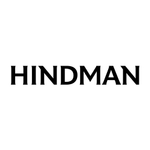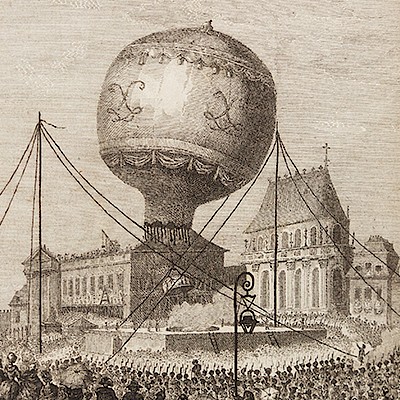COOK, James, Captain. [Collected Voyages]. London, 1773, 1777, 1784. FIRST ED. of the 2nd & 3rd Voyages, Second (best) ed. of th
Lot 48
About Seller
Hindman
1338 West Lake Street
Chicago, IL 60607
United States
Recognized as the Midwest's leading fine art auctioneers, Hindman Auctioneers has built a worldwide reputation based on a full service approach to the auction business tailored to meet the individual needs of our clients. Coming from a variety of educational backgrounds, specialists bring years of e...Read more
Categories
Estimate:
$20,000 - $30,000
Absentee vs Live bid
Two ways to bid:
- Leave a max absentee bid and the platform will bid on your behalf up to your maximum bid during the live auction.
- Bid live during the auction and your bids will be submitted real-time to the auctioneer.
Bid Increments
| Price | Bid Increment |
|---|---|
| $0 | $25 |
| $500 | $50 |
| $1,000 | $100 |
| $2,000 | $250 |
| $5,000 | $500 |
| $10,000 | $1,000 |
| $20,000 | $2,500 |
| $50,000 | $5,000 |
| $100,000 | $10,000 |
About Auction
By Hindman
Oct 31, 2018
Set Reminder
2018-10-31 11:00:00
2018-10-31 11:00:00
America/New_York
Bidsquare
Bidsquare : The Adventure & Exploration Library of Steve Fossett
https://www.bidsquare.com/auctions/hindman-auctions/the-adventure-exploration-library-of-steve-fossett-3507
Hindman Bidsquare@hindmanauctions.com
Hindman Bidsquare@hindmanauctions.com
- Lot Description
COOK, James, Captain (1728-1779). [Collected Voyages]. London: Strahan and Cadell, 1773, 1777, 1784.
Together 3 works in 8 volumes (283 x 220 mm). FIRST VOYAGE: 23 engraved plates, 29 engraved maps (on 28 leaves, 23 folding), including extra map, "A Chart of the Islands Discovered in the Neighbourhood of Otaheite made by Byron, Wallis, Carteret & Cook... 1765-69". SECOND VOYAGE: Engraved frontispiece portrait; 49 plates, 14 maps (all folding). THIRD VOYGE: Engraved portrait by Nicholas Dance, 61 engraved plates and 27 engraved maps (49 folding), folding letterpress table, without the "Death of Cook" plate. (Some plates shaved with minor spotting and offsetting, a few dampstained, a few other minor defects.) Contemporary diced russia gilt (sympathetically rebacked in early sheep gilt).
A COMPLETE SET OF COOK'S VOYAGES: FIRST EDITIONS of the second and third voyages, second (considered the best) edition of the first voyage.
FIRST VOYAGE, 1768-1771: With the map of the Straits of Magellan, not generally issued with the first edition of the same year, the Preface to the second edition in which Hawkesworth responds to Alexander Dalrymple's heated reaction to the first edition and Cook's failure to search for or locate the Great Southern Continent. Volume I contains the voyages of Byron, Carteret and Wallis, with the discovery of Tahiti, and volumes II-III contain Hawkesworth's edited account of Lieutenant Cook's voyage (he was only promoted to Captain on his return). Cook's instructions for this first voyage were to observe the transit of Venus from Tahiti and to carry on John Byron's survey and examination of the seas between Cape Horn and New Holland, but they did not extend to searching for Terra Australis. He did, however, add more than 5,000 miles of coastline to Admiralty charts for Tahiti, Australia and the Great Barrier Reef, and New Zealand, which he circumnavigated.
SECOND VOYAGE, 1772-1775: Cook's instructions for the Second Voyage were to circumnavigate the globe as far south as possible to search for any southern continent. He fully proved none existed but remained convinced of a land mass beyond the ice fields and became the first to cross the Antarctic Circle. He further charted Australia, revealing the first evidence of a strait separating it from Tasmania, and New Zealand, and re-discovered Easter Island, the Marquesas, Niue, Tonga, the New Hebrides, New Caledonia, Norfolk Island, and South Georgia. As importantly, he proved the value of the marine chronometer in determining longitude and found a means of preventing scurvy. With him were the Forsters (father and son), Sparrman, and others.
THIRD VOYAGE, 1776-1780: The Third Voyage was principally to seek a North-West Passage. From Cape Horn they sailed to the Kerguelens (named Desolation Island by Cook), Tasmania, and New Zealand, charting and mapping all the way, then north, discovering the Hawaiian Islands (which Cook considered his most valuable discovery) and Christmas Island, and charted the American West Coast from Northern California through the Bering Strait to 70 deg. 44' N. Wintering in Hawaii, Cook was killed "in an unhappy skirmish." Charles Clerke, then John Gore, assumed command and returned north without success. Also on board were James Burney, William Bligh, James Colnett and George Vancouver, who all made their own great contributions to navigation and discovery.
"Captain Cook's three great voyages form the basis for any collection of Pacific books. In [these] voyages Cook did more to clarify the geographical knowledge of the southern hemisphere than all his predecessors together had done. He was the first really scientific navigator, and his voyages made great contributions to many fields of knowledge" (Hill). Beddie 648, 1216, 1543; Hill 783, 358, 361; Holmes 5, 24, 361; Mitchell 650, 1216, 1543; Sabin 30934, 16245, 16250. A VERY GOOD CRISP SET, UNIFORMLY BOUND WITH FINE IMPRESSIONS.
Estimate $20,000-30,000
Provenance: William Philip, Earl (Crox Teth armorial bookplate).
- Shipping Info
-
Please refer to https://www.lesliehindman.com/shipping-packing/
-
- Buyer's Premium



 EUR
EUR CAD
CAD AUD
AUD GBP
GBP MXN
MXN HKD
HKD CNY
CNY MYR
MYR SEK
SEK SGD
SGD CHF
CHF THB
THB![COOK, James, Captain. [Collected Voyages]. London, 1773, 1777, 1784. FIRST ED. of the 2nd & 3rd Voyages, Second (best) ed. of th](https://s1.img.bidsquare.com/item/l/3883/3883309.jpeg?t=1G60sR)
![COOK, James, Captain. [Collected Voyages]. London, 1773, 1777, 1784. FIRST ED. of the 2nd & 3rd Voyages, Second (best) ed. of th](https://s1.img.bidsquare.com/item/s/3883/3883309.jpeg?t=1G60sR)










